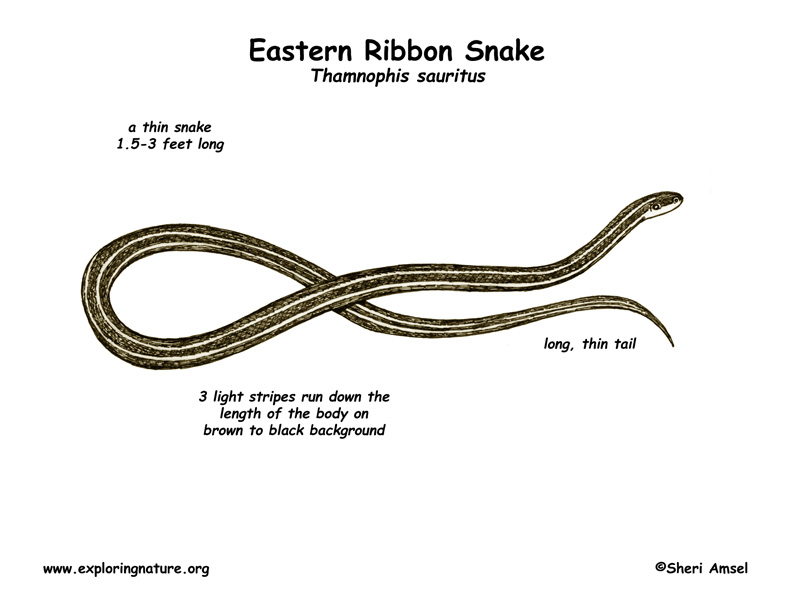


They are found in southeastern Canada and the eastern U.S. south to Florida and west to the Great Lakes.
They live near streams, lakes, ponds, and marshes, always close to water near forests. When startled, it takes to water. Unlike water snakes, which dive, ribbon snakes glide swiftly across the water's surface.
They are thin snakes and about 1.5 – 3 feet long, ending in a long tin tail that can be 1/3 of its length. The have 3 light stripes on their dark body. Each side stripe has a brown stripe below it. They have a light patch in the front of each eye.
When they are scared, they slide into the water and swim away. In the winter, they sleep (hibernate) underground.
They stalk and eat frogs and salamanders and sometimes insects, spiders, small mammals, tadpoles, and fish.
They are eaten by hawks and herons.
Females have 3-26 live young.
Kingdom: Animalia
Phylum: Chordata
Subphylum: Vertebrata
Class: Reptilia
Order: Squamata
Suborder: Serpentes
Family: Colubridae
Genus: Thamnophis
Species: T. sauritus
When you research information you must cite the reference. Citing for websites is different from citing from books, magazines and periodicals. The style of citing shown here is from the MLA Style Citations (Modern Language Association).
When citing a WEBSITE the general format is as follows.
Author Last Name, First Name(s). "Title: Subtitle of Part of Web Page, if appropriate." Title: Subtitle: Section of Page if appropriate. Sponsoring/Publishing Agency, If Given. Additional significant descriptive information. Date of Electronic Publication or other Date, such as Last Updated. Day Month Year of access < URL >.
Amsel, Sheri. "Snake (Eastern Ribbon)" Exploring Nature Educational Resource ©2005-2024. December 14, 2024
< http://exploringnature.org/db/view/517 >
